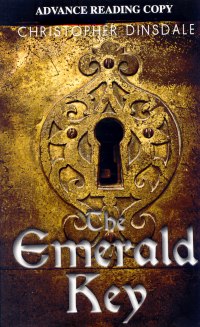| ________________
CM . . . . Volume XIX Number 9 . . . . November 2, 2012
excerpt:
The (fictional) Book of Galway, an ancient, illuminated, hand copied work comparable to the real life Book of Kells, is the missing item alluded to in the excerpt above, but it is not the "key" mentioned in the title. An order of monks in Athy, Ireland, savee the book from Viking raiders in 782 A.D. Within the book is the key, one quarter of a map, which, along with the other three quarters, shows where the valuable gold and silver vessels, candlesticks and other artifacts belonging to the order were stashed for safekeeping. Some of this information is presented in the prologue. The first chapter opens at the worst of another crisis in Ireland, the potato famine. In 1847, Jamie and Ryan Galway, two teenaged members of the religious brotherhood who have inherited the Book of Galway, are bringing the book to Cork for safekeeping since there are treasure hunters roaming Ireland taking advantage of the turmoil to steal valuables. The youths travel a route littered with the corpses of their starved countrymen. When they come to the defence of a poor woman being abused by a landlord and some British soldiers, they are knocked unconscious. After Jamie regains consciousness, he learns that Ryan has been loaded onto the ship Carpathia, bound for Quebec. The satchel containing the Book of Galway has disappeared, too. Jamie's adventures in finding Ryan and the precious book begin with a storm tossed, typhoid ridden voyage to Canada during which he assists the crew and accepts responsibility for an orphaned preschool boy. He and the child, who miraculously remain in good health throughout the voyage, escape from the Grosse Isle quarantine station using a coffin as a rowboat. A beautiful native woman rescues them from their sinking vessel and offers to guide them to Quebec where Ryan may be. Jamie accepts her offer, and en route to Quebec, acquires another orphan. Bethany has run away from the Quebecois family who took her in after her parents' deaths. Many Irish orphans, adopted in the mid 19th century by French Canadians, were happily absorbed into Quebec culture. Many adoptive parents honoured the dead by letting their children keep their own surnames, so, to this day, there are Francophone Quebecois with Irish surnames who are descendants of these Irish orphans. Jamie and the two children embark on further adventures which include rescuing the Book of Galway from the Canada East legislature, a building which is set on fire by an angry mob protesting the Rebellion Losses Bill. The young people evade treasure hunter Jonathon Wilkes who has pillaged sacred sites in the Far East, Egypt and South America, and who now wants to find the Irish monks' treasure. A drawing left by Ryan in the Book of Galway suggests to Jamie that his brother has gone to St. Catharines in Canada West to work on the Erie Canal project. With a pack of orphaned Irish youths, Jamie hijacks a steamboat and speeds up the St. Lawrence and through the Great Lakes. Another dramatic scene at the lift locks ends in the vanquishing of the evil Wilkes, and reunion with Ryan. An epilogue tells readers what happens to the Galway brothers and shows readers the treasure in all its glory, but without telling readers of the circumstances of its recovery. Jamie is a traditional hero, one who defends the weak, protects the orphaned, never gives up hope and keeps his eyes on his goal. He is unique in being a monk. At one point, he tells his beautiful native benefactor that she is "the only girl he could imagine himself married to." Readers could use some clarification as to Jamie and Ryan's status within the order and the rules governing leaving the order. This fast paced, action packed novel, with a young male hero performing extraordinary feats, seems designed to appeal to youths who like action/adventure movies and games. Youthful daring and ingenuity defeat the villain. Some history teachers will admire the way each step of Jamie's quest involves an historical reference or event. Other history buffs may feel that the unexaggerated past, without treasure quests and over the top action sequences, is interesting enough, in and of itself, to be the raw material of historical fiction. Two of my favourite teen novels, Yesterday's Dead (about the 1918-19 flu epidemic) and The Landing (about dreams deferred during the Great Depression) are slower paced, character driven, thoughtful, deep, and focused on one main historical event. The world of historical fiction has room for many sub genres and an action/adventure historical like The Emerald Key will definitely appeal to many readers. Recommended. Irish history is key in The Old Love and the New Love, (Ottawa, Baico, 2012. $18.95), Ruth Latta's most recent novel (for grown ups).
To comment
on this title or this review, send mail to cm@umanitoba.ca.
Copyright © the Manitoba Library Association. Reproduction for personal
use is permitted only if this copyright notice is maintained. Any
other reproduction is prohibited without permission.
NEXT REVIEW |
TABLE OF CONTENTS FOR THIS ISSUE
- November 2, 2012.
AUTHORS |
TITLES |
MEDIA REVIEWS |
PROFILES |
BACK ISSUES |
SEARCH |
CMARCHIVE |
HOME |
